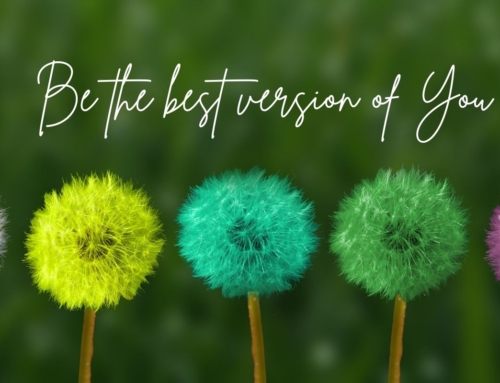Yoga’s benefits affect each person perfectly and beautifully in very unique and different ways.
Many are drawn because it helps them to relax; others find themselves enjoying feeling healthier and more energetic. Personally, I am forever grateful for what Yoga has given me and I know it will continue to have a positive influence on me for life. “I don’t say this because I am a teacher, but as a teacher, I am drawn to inspire others. If I gave up teaching I would still draw on the historical knowledge and wisdom that has proven generation after generation to give its dedicated practitioners a happier outlook on life because of the tools given to build your resilience to get back up and keep going again, and again, and again”.
Yoga simply means to unite body and mind. We are shown how to relax so we can rejuvenate. Scientists are making new discoveries within their own research and by studying both long-time yogis and beginners. To date, they have found that the stress hormone cortisol decreases, even after just one session of yoga. Yoga has been found to increase alpha and theta waves in the brain, and increase access to the subconscious and emotions. Affirmations are proven to repair and reproduce neurons making you smarter. And by increasing the feel-good brain chemicals like endorphins, enkephalins, and serotonin, yoga practitioners just feel better.
Physically all systems in the body – from the lymphatic to the digestive to the cardiovascular – benefit from yoga. The Asanas (postures), especially the more active styles, strengthen and tone muscles, improve balance and posture. The more gentle practices greatly support the nervous system teaching the body to relax and the respiratory system by breathing deeply. Yoga has already proven to be a great cross-train companion for other sports to ease strains from repetitive injuries and help increase strength and flexibility in other areas of their bodies that may not otherwise be incorporated into their sporting activities. And breathing practices and meditation help athletes keep their heads in the game.
When all elements about us being human are balanced, physically, mentally, emotionally and with some kind of faith all working together in harmony, a yoga practitioner feels healthier and finds they want to continue to make other healthy choices in their life.
So what is a balanced Yoga Practice?
For a lifelong sustainable practice, a student incorporates the awareness and guidance of the 8 limb path.
The name “8 Limbs” refers to the eight branches of yoga: Described as branches, because you reach for whichever will assist you in managing whatever comes your way. They all work together.
- Yama (5x ethical standards focusing on integrity, behavior, and how we conduct ourselves),
- Niyama (5x self-discipline and acknowledging life is bigger than I),
- Asana (physical postures),
- Pranayama (restraint or expansion of the breath),
- Pratyahara (withdrawal of the senses),
- Dharana (concentration),
- Dhyana (meditation) and
- Samadhi (complete integration).
The 5 Yamas are ethical disciplines. Attitudes towards our inner and outer environments
1. Ahimsa (non-harming or non-violence):
To let go of hostility and irritability towards yourself. To instead make space for peace.
Gives permission for you to be who you are without harsh judgment or unrealistic expectations.
To look at all the attitudes you have that keep you from feeling at peace.
To start off or come back to, a place of openness and acceptance allows you to experience less suffering
Practice what I call the Goldilocks theory – “Not too much, not too little, just the right amount”. Not doing is just as harmful as overdoing.
How we treat ourselves is how we will treat others, as well as how you will let others treat you.
Your choice of words, whether they are spoken or thought, has an impact on you emotionally and physically. Some science you can look at to prove this:

- Doctor Emoto’s experiments demonstrate the power of the words we speak, having an effect on water. With the human adult body being up to 60% water, of which the brain and heart are composed of 73% water, makes you want to consider what words you choose more mindfully.
- The neuroscience of gratitude; even if you aren’t able to think of anything to be grateful for, simply asking yourself the question is powerful enough to change your brain chemistry. But the reality is there is ALWAYS something you can be grateful for.
- Dr Bruce Lipton is a Stem cell biologist as well as an internationally recognized leader in bridging science and spirit. A great podcast you can listen to is his interview with Russel Brand about how our environment affects our biology. How do our cells operate and how do they make us who we are.
2. Satya (truthfulness):
Truth is amongst the highest of ideals.

It’s also a very powerful word having an impact on our biology. Re Dr Emoto’s photos
You must have integrity and humility to realize that the truth is bigger than you.
Acceptance is essential to help you move forward wisely and correctly.
Satya asks you to consider not only speaking the truth but to acknowledge your thoughts are not judging or harming.
Your words deflate or elevate you. They give you energy just as much as they can take it. When you speak your truth you are empowered despite how much it may hurt. Once the initial dust settles you can only feel free when the truth is spoken.
Many yoga students find that spending time in silence helps them notice the distinction between opinions and reality.
Slowing down your internal chatter can help ground you in Satya. In silence, you can examine the roots of speech on an inner level, which enables you to better control your outward communication.
You then establish a way of interacting with yourself that includes both Ahimsa (non-violence) and Satya (truthfulness), for both inner and our peace.
3. Asteya (non-stealing);

Translated ‘to refrain from taking anything that is not freely offered’
The first things most people think of are stealing money, clothes, food, and other tangible stuff. But Asteya is more than material possessions. You can steal someone’s time if you are late. You can steal someone’s energy by your words and actions. You can steal someone’s happiness. You can steal someone else’s ideas if you represent them as your own. All these whether you feel it at the time, affect you just as much deep inside.
Yoga teaches us to be aware of how and what you consume. If you are taking something, you need to consider how to give back the appropriate energy or amount taken to keep the balance feeling fair and equal.
Yogic texts see everything as interconnected, whatever you receive is taken from somewhere else.
Most people don’t stop to consider all the different hands or levels of energy, or even resources involved in all they are consuming.
Think of the food you eat. How much
you pay for it to balance the time and energy involved to bring it to you. Major imbalances occur if you take more than you give. Think of fair trade, not only in your shopping habits but also in all your day-to-day interactions.
To invite Asteya into your life, consider what you truly need and refrain from letting your desires persuade you to take more. Take your energy, do you keep pushing yourself when you need to rest. Or do you waste time and energy in avoiding what you know will bring you good?
Respect the time and energy of others, give credit where credit is due, and see if you can help build up the world’s kindness reserves by giving more than you take.
4. Brahmacharya: Right use of energy, or energy moderation:

It’s about preventing the dissipation or leaking out one’s energy through the misuse of the senses. It’s a personal energy-conservation program. When you practice Brahmacharya, you are not letting your senses (influences coming in from around you) rule your behavior. You think before you react.
Anything that causes turbulence in the mind stirs your emotions: overstimulating foods, loud music, violent movies, and even, inappropriate sexual behavior.
Whatever disturbs your mind and body disturbs your level of energy.
When you get angry or worried, have you noticed how tired you feel afterward? Therefore, Brahmacharya asks you to consider how you spend it. Look at energy like money in the bank: If you have $100, you don’t want to spend it all right away so that you have nothing left. Become a good energy manager
When you’re working with your yoga postures (asana), you need to learn to regulate your effort so that you’re not pushing and forcing, which drains your energy. One of my teacher’s quotes is that each posture should be medicinal to the body and mind not poisonous.
Give what you have to give truthfully (Asteya) so your yoga postures or actions in life can be replenishing your energy, not draining it.
Seeking Balance – Goldilocks Theory of not too much, not too little.
5. Aparigraha: Non-grasping
Basically, it is Freedom from wanting… Less wanting or needing means more space, more time, and a lot more energy.
So much energy is sucked into things that you ‘must-have’.
To have material things some of us work hard real hard for money to buy stuff, and I’m not talking about our basic essentials. The energy in keeping up with the Jones, or fear of missing out. The more stuff you have the more you have to take care of or defend it. You start to get attached and identify with stuff. It’s easy to think you are your stuff, or your stuff makes you who you want to be. The number of earth’s resources used to make stuff, that is simply thrown away after a single-use. We have sheds full of storing stuff and sheds full of waste that can’t be recycled.
The truth is that stuff comes and goes. Aparigraha just asks us to think before we buy. To acknowledge the thrill of something new dies after a few uses. That it’s a lot of energy used for a fleeting moment of happiness.
Aparigraha also relates to attitudes we cling to. If you are hanging on to old beliefs, or someone else’s belief about yourself, or a relationship, or a career that no longer feeds you, then we can feel trapped. That there’s no freedom to move in a different direction.
To acknowledge abundance and practice gratitude means you don’t need more and more. You become grateful and feel fulfilled with what you have and who you are at this moment.
This quote from Buddha is perfectly written “In an age of manipulation and lies, only critical thinking allows us to live free, autonomous lives”

Overall the 5 Yamas are about using positive intention to reduce guilt. Truth, discipline, and morality are inner qualities that when cultivated within a clear framework, bring a sense of peace and well being, from knowing we live a life of integrity and no-harm.






